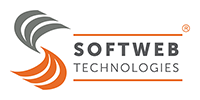Introduction
Customer Satisfaction is the first and foremost thing every retail store is looking for. As long as customer satisfaction and services are maintained by the stores, every other KPI (Key Performance Indicator) falls in place. End of the day, a healthy KPI confirms a revenue-generating business.
Productivity in Retail Stores
Every retail store or organization primarily expects two things from any store. If it is a new store, it is able to achieve its EBITDA (Earnings before Interest, Tax, Depreciation, and Amortisation). In simple terms, the store is able to garner profit after deducting all necessary expenses required for store operations including rent or lease deducted from its total sales.
If the store is more than one year old, apart from maintaining a positive EBITDA, the store has to maintain a like-for-like (LFL) growth every day i.e. the store must register growth in its sales, compared to the same day last year. These all parameters if fall in place, a store could indeed be marked as a profit-making store.
A healthy KPI can only be reflected if store maintains healthy customer service and is able to bring back its loyal customers regularly. As it is a proven fact that 80% of business comes from 20% of customers. An increased base of loyal customers with regular visits always makes a business healthy.
It’s a common practice, whenever a new store opens up, loyalty program enrolments are provided at a huge discount to new customers along with shopping vouchers for the next buyer. Ensuring the customer visits your store regularly.
Deploying modern technology has always been a priority for retail organizations to manage these customer engagement activities smoothly enough. As data-driven software and technologies help in maintaining healthy customer relationship management enabling store management to keep its customer base engaged and happy.
Facial Recognition through Customer Touchpoints
Facial recognition technology, in this scenario too can create a major difference in how the customers are provided services.
Ideally, it is said, a customer has to go through 5 touchpoints after entering a store and making a purchase. Here, a touchpoint is being referred to places where ideally a shop floor executive or security personnel interacts with customers.
Where?
These 5 touchpoints can be mentioned as under:
1. The entry gate – Ideally, where a security welcomes a customer while he or she enters.
2. The shop floor– where the shop floor executive guides you or assists you in selecting a merchandise.
3. The trial room– the arena where a trial room in charge seeks your feedback post-trial or helps one with merchandise not selected.
4. The cash counter is where the customer interacts with the cashier while making payment.
5. The exit Gate – here, ideally the customer is greeted with a thank you by security personnel while leaving.
As new technologies have emerged, the retail industry has embraced them in their operations to enhance their customer service and operations management.
Facial Recognition along with analytics is gaining prominence across industries to create real time data for gaining customer insights. Let us see, how facial recognition can be used to increase the productivity in retail force and can also help employees to serve customers better.
How?
At The Entry gate:- The intention of serving the customer begins from the very point a potential customer enters your store. It could be well assumed a customer has entered a store with the intention to buy either that day itself or for the future.
Applying facial recognition technology will help whether the customer was comfortable entering the store. A happy customer will be easy to convert. Moreover, with help of Facial Recognition Technology, we can create alerts for loyal customers whenever they are entering a store. This way we can increase the basket size or the amount or quantity purchased by customers by providing personalized service.
Shopfloor: The second touchpoint where a customer ideally is to interact with a floor executive for enquiring about any specific stock or collection. Facial Recognition can create an alert whether any customer is being attended to by any floor executive or not. Research has shown customers tend to shop more when assisted by a floor executive to help with suggesting the collections.
Trial Room: Research has shown. 90% of the purchase decisions are made at trial rooms. After trying on a product, if it fits well customer makes up their mind to purchase it.
If a designated trial room operator suggests more color options and size options for any specific product the customer has liked, the chances of adding multiple items in the shopping basket increase.
Facial recognition software-based cameras around the trial room will help to understand whether any assisted support is being provided to the customer or not.
Cash Point or Billing Section: The most vital area where the final transaction takes place. This area is also sensitive as the matter of cash is involved. All stores, be it small or big, makes it a point to place a camera around the cash counter.
A facial recognition-based software-enabled camera will help to understand, how much time is being spent by the customer in the queue for billing. Moreover, it can also help one understand how the cashier is dealing with the customer while billing. A personal greeting and keeping customers engaged while billing enhances the customer experience motivating them to visit the store more.
Exit Gate: The last point is where the customer finally leaves the store and here floor assistant or store security personnel wishes the customer thank you. Facial Recognition software-based technology can help you understand whether the customer was greeted or not.
These are the ways facial recognition in retail can develop the productivity of the retail sector across various areas. A base of loyal customers are the main business driver for a store. Smart technology like TORK- Retail facial recognition software for retail provides retail managers with these types of data to make businesses profitable.


